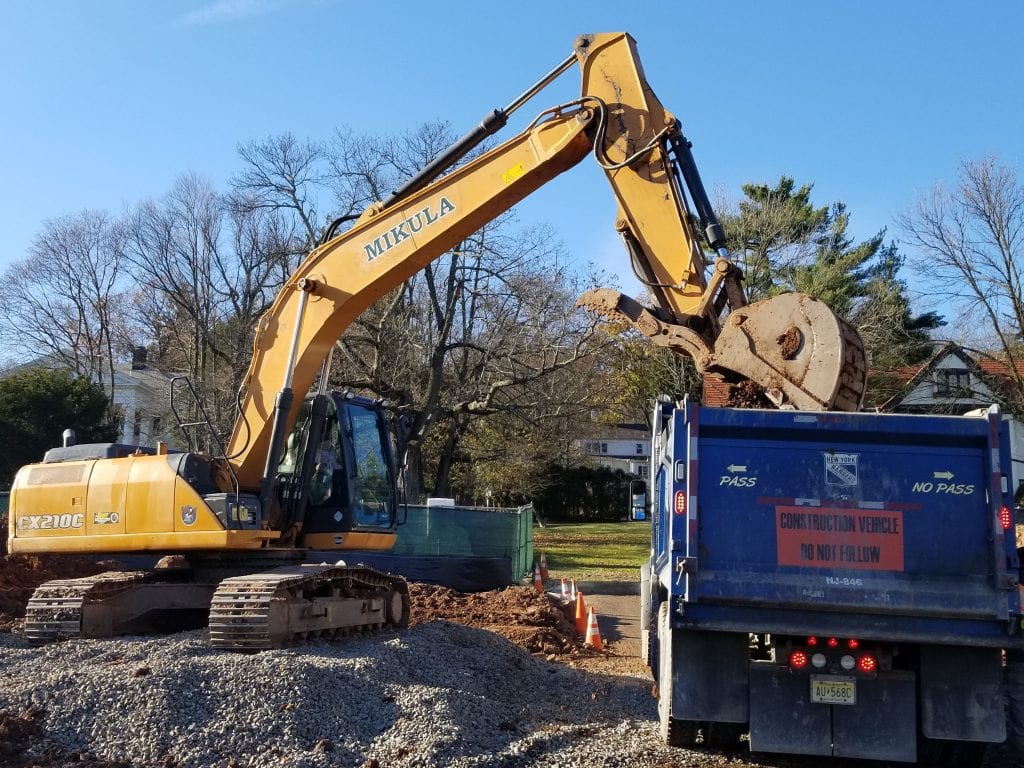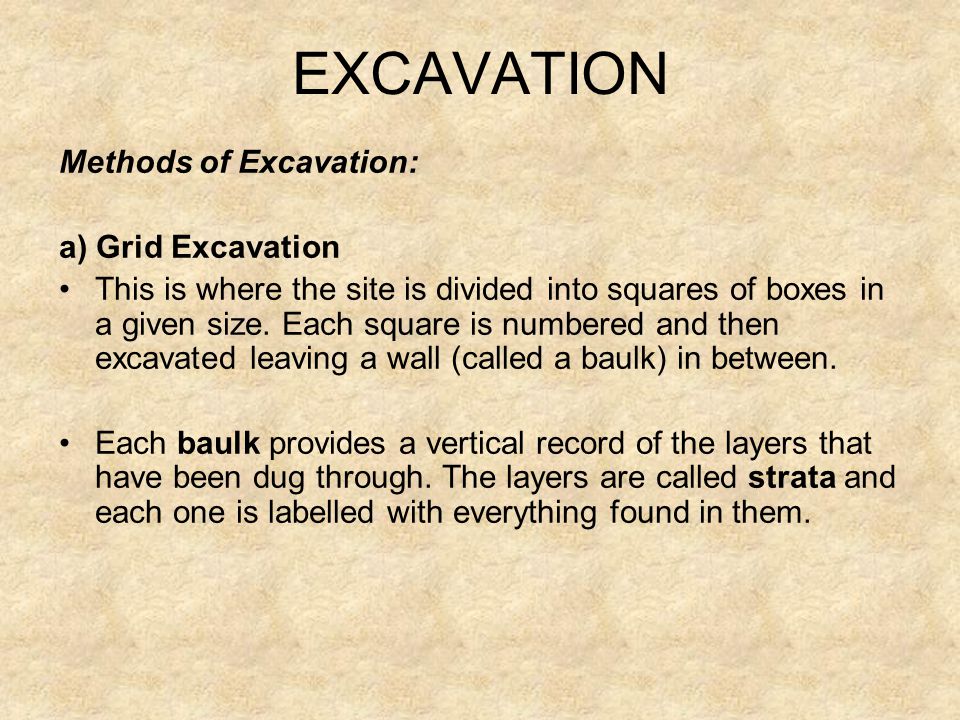Concrete Contractors - Questions
Wiki Article
Grading Contractors Things To Know Before You Buy
Table of ContentsIndicators on Mini Excavator You Need To KnowThe 5-Second Trick For Excavation CompaniesAll about TrencherExcavating Contractors - TruthsNot known Factual Statements About General Contractor


Scrapers or Pans dig deep into soil in one place, haul and also unload the dirt in another spot (excavating contractors). It is hard to match the efficiency of scrapers for cut/fill soil procedure if the haul range is much less then a mile. Scrapes are typically pulled by a rubber tire wheel tractor as well as are occasionally pressed with the cut area by a bulldozer.
There are sometimes that scrapers are not used for site grading and a dump truck is utilized: the haul may be to long, the haul might go across roads where scrapes are not allowed, hard rock might be encountered, equipment accessibility, etc. Discard vehicles are in usual usage as well as most likely require little conversation.
"Rock body" beds, on the various other hand, have no tailgates as well as can discard any type of dimension rock, although their quantity capability is decreased. Compaction Tools boosts the thickness of the soil and also in some instances gives a smooth, rolled surface area.
The Only Guide for General Contractor
From a straightforward examination pit to percussion drilling to core exploration the owner has progressively more costly choices that produce progressively much better data regarding the website underground. As an example, the Owner on a 100,000 SF structure project might accredit twenty uninteresting locations with split spoon soil samples taken until rock is reached and after that core samples of rock.Knowing the kind and high quality of rock (from the core samples) and place of rock (from the dirts boring) is a genuine advantage in jobsite preparation. Conversely, the Proprietor of a 100,000 SF structure may make a decision to wage no geotechnical testing whatsoever. The decision regarding geotechnical testing is normally made by a Proprietor without input from the Construction Manager.
An expertise of the approximate area of the rock aids the Construction Manager to prepare the series of steps complying with rock excavation. If rock is in one corner of a big structure job, for example, the planet excavation might start at the contrary end of the building in order to begin foundation work soonest.
Beginning the structure job early would be a great concept if the rock could be removed by ripping. Nevertheless, if the rock is extremely tough and requires significant blasting, it may be prudent to hold foundation work until the blasting is finished. The Building and construction Manager ought to coordinate these kinds of choices and use all the technical day available.
How Excavator can Save You Time, Stress, and Money.
Unidentified excavation stipulates that all rock or other unforeseen materials (excluding hazardous materials) come across in the sitework will be the duty of the Service provider at no modification in contract price. An unclassified excavation is easier from a book-keeping viewpoint and places the duty for geotechnical conditions onto the Sitework Service provider.It's impressive what a heavy rain can do to a construction project. Prior to the rain, the website might be completely dry, heavy devices effectively relocating planet, the other professions efficiently executing their job.
In most areas of the globe, the Building Manager need to bear in mind an easy truth: IT WILL RAIN. Excellent preparation can lessen the damages as well as disruption of a heavy rainfall to a jobsite. Typically the excavation as well as grading is delegated the Sitework Service Provider (and their Foremen is accountable to manage and also guide the heavy equipment and also drivers).
The Building Supervisor have to be constantly mindful of what rain will certainly do to the job site. It is not uncommon for the Sitework Supervisor to function their heavy tools for maximum efficiency and also hope it does not rainfall. Among the ideal methods to prepare for rainfall is to slope all qualities to drain and to smooth rolled the surface area prior to a rainfall.
The Ultimate Guide To General Contractor
The Building and construction Manager must be well-balanced sufficient to insure that hefty rain does not quit working on the job much longer than needed. Daily conversations with Sitework Foremen may be required to achieve this objective. At any time excavation is called for listed below the existing water level on a job, the process of dewatering must be taken into consideration.In a truly natural dirt, the water travels so slowly via the clay go right here or silt that dewatering is not normally required for the relatively brief time of excavation. Dewatering might be required for a solitary ground excavation or for an entire project website. The most usual dewatering approaches are trench drains, deep wells and well factors.

Ground water seepage can also be reduced by cutoff methods such as sheet loading. The costs for dewatering can be staggering, consisting of equipment leasing, labor and electrical energy (or fuel). High dewatering costs have paled the profit margins on much too several projects. The many variables listed here make the task of approximating dewatering costs really challenging, and also very inexact.
This alternative ought to constantly be taken into consideration when examining the prospect of dewatering. Obviously the alternative is just feasible if gravity can run the water to lower ground. Trench drains can be cut with a backhoe and loaded with a rugged, granular product (# 4 rock for example), yet care needs her explanation to be worked out in selecting the water outlet kind as well as area.
The Only Guide for Demolition
A siphon, necessarily, uses climatic pressure to lug water from one elevation, up over a challenge, to a lower altitude. The pipes in a siphon system have to be closed and some resourcefulness is frequently required to totally fill the siphon pipe. The siphon pipeline should be complete for the siphon to begin.A deep well is composed of a pump, tube and a vertical well casing. The pump intake is at the base of the well casing (normally some smashed stone is put there as a filter medium) (general contractor). The water is pumped up the hose pipe, out of the well casing, and to an ideal discharge place.
In a rugged sand, for instance, a big location can be pumped to near the pump consumption elevation. A less permeable dirt, on the various other hand, lowers the effectiveness of a deep well. Given that the pump is generally at the bottom of the deep well, there are no height restrictions as a result of vacuum lift, and deep wells can lower the groundwater over 50 feet.
Under of the wellpoint there is a 2 foot long screen as well as valve, water jets out of this valve as well as produces an opening right into which the wellpoint pipeline can be decreased. This opening is frequently made a larger diameter (for example 10 inches) to permit a excavation estimating rugged sand backfill to assist filter the water (mini excavator).
Report this wiki page